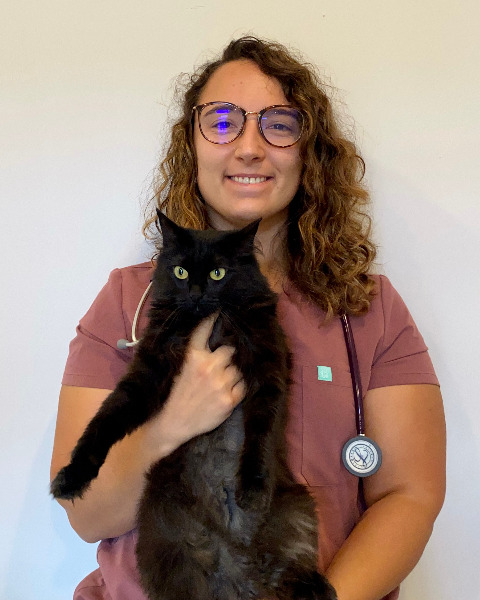Small Animal
abs: Risk Factors for Biliary Peritonitis in Dogs
Emergency! When Should It Go?

Solène Renaud, DMV, IPSAV
Surgery intern
Faculty of veterinary medecine, University of Montréal Centre vétérinaire Rive-Sud
Montréal, Quebec, Canada
Abstract Presenter(s)
Biliary peritonitis is a surgical emergency associated with a high mortality rate in dogs, ranging between 28% and 50%. Hyperbilirubinemia has been associated with decreased survival, however information regarding other prognostic factors affecting survival in the perioperative period is scarce. This study aimed to determine if signalment, clinical signs, physical examination findings, diagnostics, surgical findings, treatment, and complications influenced outcome—discharged or died during hospitalization—of dogs treated surgically for biliary peritonitis. Medical records of dogs that met the inclusion criteria at four referral centers between January 2015 and December 2021 were reviewed retrospectively. Statistical analyses were performed to identify risk factors that affect short-term outcome. Thirty-three dogs were included. Cholecystectomy was the procedure most frequently performed. Mortality rate was 36% (12 of 33). Survival was significantly negatively affected by preoperative hypoalbuminemia and hyperbilirubinemia, perioperative administration of vasopressors or blood products, and number of postoperative complications. A 50% mortality rate was observed in dogs with a hypoalbuminemia below 22 g/L or a hyperbilirubinemia above 60.5 µmol/L. There was no difference in mortality between septic and aseptic effusions. This study has identified new factors associated with decreased survival in dogs operated on for biliary peritonitis and confirmed others previously reported. The main limitations were the retrospective and multi-institutional nature of this study and the low number of cases included. Preoperative threshold values for albumin and bilirubin with 50% mortality were determined and can help to predict the short-term clinical outcome of dogs treated surgically for biliary peritonitis.
